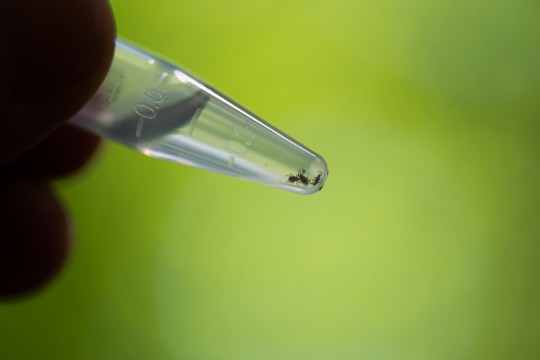The black-legged tick is a small arthropod that feeds by latching onto the skin of mammals of all sizes–including humans. Some ticks carry a bacteria that causes Lyme disease, which they can transfer to people they have bitten.
The black-legged tick is increasingly common in southern Quebec and spreading north. Luckily, there are simple precautions that help prevent tick bites while or after hiking.
Here are 5 anti-tick tactics!
Stay on marked trails: Ticks are found most often on branches, understory vegetation and in tall grass.
Wear long, light-colored clothing: Wear closed shoes and long pants, tuck the bottom of your pants into your socks or boots, and tuck your shirt into your pants. An adult tick can be as small as a poppy seed; light-colored clothing makes it easier to spot ticks.
Apply insect repellent: Insect repellents can help protect you from insect and tick bites. Use an icaridine or DEET-based repellent on exposed parts of your body, avoiding the face.
Take a shower within two hours after being outdoors: Taking a shower can help remove ticks that are not attached to your body. Take the time to inspect your entire body.
Wash/dry your clothes and check your gear: Put your clothes in the dryer or wash them in hot water to eliminate any ticks that might be on them. Inspect gear that cannot be washed, such as your boots or backpack.
Learn more
- To know the risk of contracting Lyme disease in your region, consult the INSPQ's disease acquisition risk map.
- You have been bitten by a tick? Learn how to remove it.
- Want to know more about Lyme disease? Consult the Government of Quebec's rubric.


